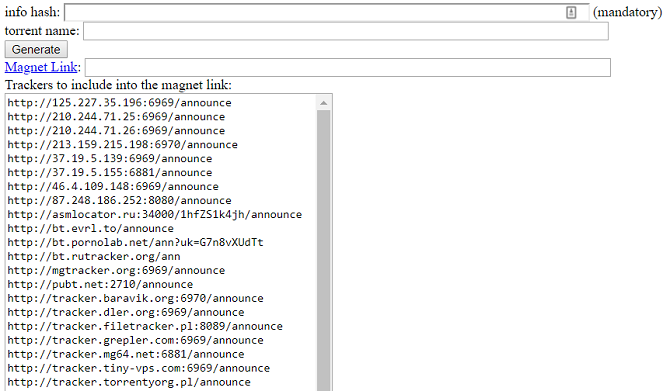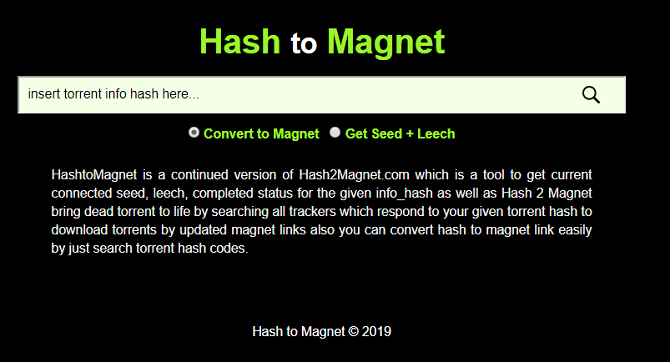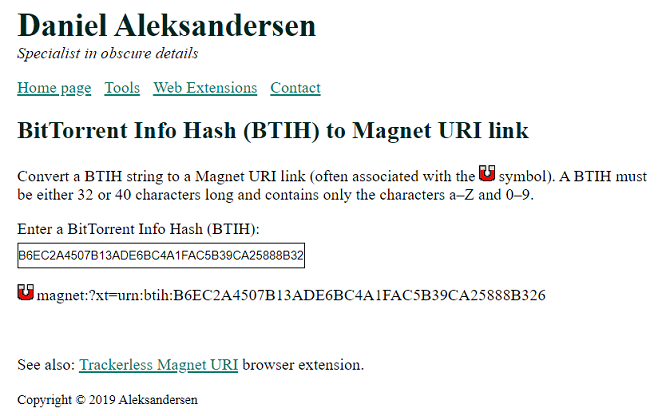If you've ever downloaded a torrent, you will have undoubtedly come across terms like "magnet" and "info hash."
Most people think they'll never need to worry about what the terms refer to or how they relate to the downloading process. But sometimes it's beneficial to know.
Today, we're going to look at what magnet and info hash actually mean, how they relate to each other, and how to convert an info hash into a magnet file.
Using Torrents: A Warning
MakeUseOf does not condone using torrents to download copyrighted material. Doing so could land you in trouble with your ISP and the authorities. In a best-case scenario, you could end up with throttled speeds. At a more severe level, you might receive a fine. Depending on the severity of your transgression, it could total tens of thousands of dollars.
To make sure you stay safe, you should always use a reliable paid VPN service to hide your activity. We recommend checking out ExpressVPN and CyberGhost.
What Is an Info Hash?
To explain what an info hash is, we first need to take a step back and look at how torrents work.
Unlike regular web traffic (which connects to a central server to download a file or webpage), torrent downloads are decentralized via a peer-to-peer (P2P) network. They do not require a central server in order to be operational.
Behind the scenes, you are simultaneously uploading and downloading a file. The downloaded parts arrive in small chunks from dozens of different users, then your computer pieces them back together again to make a single, usable file.
Because the file your downloading is so fragmented, there needs to be a reliable way to verify the contents. Otherwise, how does your torrent client know which bits to download from the P2P network?
This is where the info hash comes in. It is best thought of as a unique ID for the torrent you are downloading. It is identical for all users and across all trackers.
An info hash uses an SHA-1 cryptographic hash. SHA-1 hashes are 40 digits long (though you will also come across types of info hashes that are 32 or 64 digits). The hash is created by gathering specific information---such as file size, path, name, piece length, piece hashes, and privacy flags, then running it through a mathematical algorithm.
Once the torrent hash has been made, it provides some key benefits for end-users:
- Verifies you're downloading the right data.
- Provides evidence if someone has tampered with the data.
- Can highlight corrupted data.
If you're technically minded, you can also use the info hash to bypass centralized torrent trackers and communicate directly with peers via a Distributed Hash Table (DHT).
What Is a Magnet Link?
There are two ways to add a file to your torrent client. You can either use the magnet link or a TORRENT (.torrent) file.
A TORRENT file is a small file which contains information about the larger torrent. When you use a TORRENT file, your torrent client creates the necessary info hash and begins looking for files on the network.
A magnet link takes a more simplified approach. It's a hyperlink that contains the torrent hash. As such, your client doesn't need to make its own hash---it can immediately start looking for files on the DHT.
You also don't need to download any files onto your hard drive before you start downloading; a magnet file will open directly in your torrent client.
On a more practical level, magnet files also lead to more successful downloads. They are not affected if trackers are out-of-service or closed for registration.
How to Convert Info Hash to Magnet
Several online tools will let you convert an info hash to magnet files. They are useful if you want to create your own torrent or someone has a shared a torrent hash with you.
Here are four info hash to magnet converters.
1. Romanr.info
The Romanr.info tool looks a bit barebones, but it is one of the fastest hash to magnet converters. Just paste the info hash in the first text field, give the torrent a name (if desired), and hit Generate.
For a greater level of control, you can choose which trackers to include. 43 are included by default, but you can add and remove them as needed.
2. HashtoMagnet
HashtoMagnet is a spin-off from the once-popular (but now defunct) Hash2Magnet tool.
The site has two features. Firstly, you can perform a hash to magnet conversion. To do so, you just need the info hash code.
Secondly, you can check the current seeder, leecher, and completed status for any torrent. It scans dozens of trackers and might help you bring a dead torrent back to life.
3. Daniel Aleksandersen's BTIH to Magnet URI Converter
Developer Daniel Aleksandersen has created a hash to magnet converter on his website. The tool does not have an official name, but it works just as well as the other converters we've looked at.
There are no fancy customizations like selectable trackers or torrent names. Just paste the info hash, and the tool will create a new magnet link instantly.
4. Make the Magnet Link Yourself
It is possible to make your own magnet link based on nothing more than the info hash. From a formatting perspective, it is a complicated process. If you're unfamiliar with working with cryptographic hash values, we do not recommend it.
To learn more about magnet files' uniform resource identifier (URI) scheme, start by reading the associated Wikipedia article.
Learn More About Using Torrents
Hopefully, our detailed look at the relationship between an info hash and a magnet link has helped you to better understand the way torrents work.
And remember, if you ever need to convert a torrent hash into a magnet link, the tools we looked at will have you up and running in seconds.
If you'd like to learn more about using and downloading torrents, make sure you read our guide to the best alternatives to The Pirate Bay. For troubleshooting torrents, see our list of ways to unblock a torrent when it's not working.
Image Credit: alphaspirit/Depositphotos




